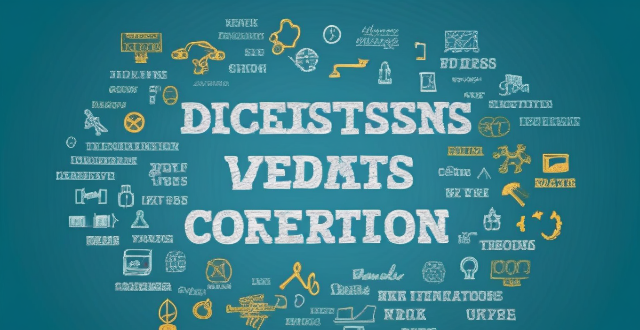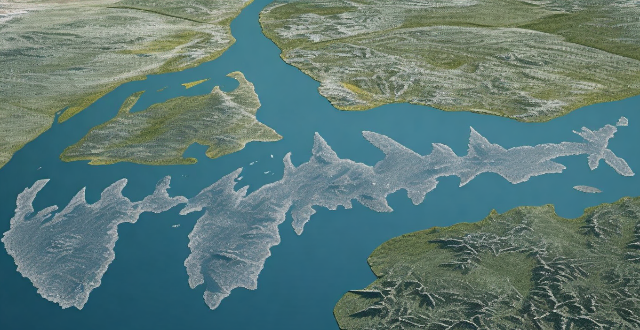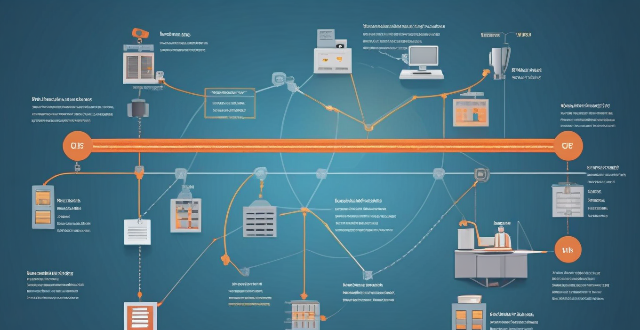Point Climate

Is it possible that climate skeptics have a valid point about climate change ?
This text discusses the topic of climate change and whether climate skeptics have a valid point about it. It outlines the scientific consensus on the matter, the common arguments put forth by skeptics, and potential valid points they may have. The text concludes that while all perspectives should be considered, decisions on climate change should be based on sound scientific evidence.

How does climate change influence the operational environments for defense forces ?
Climate change is significantly impacting the operational environments for defense forces, affecting military planning, strategy, and tactics. Extreme weather events are becoming more frequent, requiring defense forces to manage or support disaster response operations. Changes in terrain and landscape due to melting ice caps and rising sea levels can affect military operations. Climate change can exacerbate social tensions and conflicts over resources, leading to internal displacement and potential security threats. Health risks and disease spread can expand due to changes in temperature and rainfall patterns. Energy requirements and logistics may need adjustments in operational environments affected by climate change.

How accurate are climate model predictions ?
Climate models are mathematical representations used to predict future climate conditions based on greenhouse gas emissions and other factors. The accuracy of these predictions is complex, influenced by uncertainty, variability, validation against past climate change, ensemble forecasting, continuous improvement, and various limitations. Despite their usefulness, it's crucial to recognize their limitations and uncertainties for informed decision-making about climate change.

How can we address the concerns of climate skeptics and promote climate action ?
The text discusses ways to address concerns of climate skeptics and promote climate action. It emphasizes the importance of understanding their concerns, providing accurate information, building trust in science, addressing perceived costs, and overcoming political beliefs. The author suggests using educational websites, scientific studies, news articles, economic analysis, job creation, efficiency measures, common ground, local impacts, and dialogue to counter misinformation and skepticism about climate change.

What role do consumers play in supporting climate-friendly products ?
Consumers have a crucial role in promoting climate-friendly products through awareness, eco-friendly purchasing habits, advocacy, and lifestyle changes.

What role does the El Niño Southern Oscillation (ENSO) play in climate variability ?
The El Niño Southern Oscillation (ENSO) is a significant ocean-atmosphere phenomenon that influences global climate variability on inter-annual timescales. Its effects include changes in precipitation patterns, temperature fluctuations, and increased frequency of extreme weather events like hurricanes, floods, and droughts. ENSO's impact varies regionally, affecting areas such as North and South America, Australia, Africa, Asia, and Oceania differently. Understanding ENSO is essential for seasonal climate forecasting and plays a vital role in climate models used to predict future climate change scenarios.

How do climate skeptics explain extreme weather events in the context of climate change ?
Climate skeptics present alternative explanations for extreme weather events, often challenging the scientific consensus on climate change. They argue that such events are part of natural variability, unrelated to human activities. Skeptics question the interpretation of climate data, suggesting that any increase in extreme weather is not statistically significant and that climate models have uncertainties. They propose alternative causes for weather patterns, such as land use changes and industrial pollution. Furthermore, they emphasize human resilience and adaptation through technology and economic growth as key to dealing with extreme weather. Overall, climate skeptics offer a range of arguments that differ from the prevailing scientific view on climate change.

What are the main arguments of climate skeptics ?
This text discusses the main arguments presented by climate skeptics, who challenge the scientific consensus on human-caused global warming. Their arguments include natural variability, lack of consensus among scientists, unreliable computer models, economic concerns, policy misuse, CO2 benefits, absence of catastrophes, historical warming, stable temperature claims, and personal freedoms. Despite these arguments, most climate scientists disagree with these views due to extensive supporting evidence.

What are the limitations of current climate models ?
This article discusses the limitations of current climate models, which are essential tools for predicting future climate conditions and understanding the impacts of human activities on the environment. The main limitations include uncertainty in model inputs, limited spatial resolution, simplified physics and processes, computational constraints, and challenges associated with model intercomparison projects. Addressing these challenges will be crucial for improving our ability to predict future climate conditions and assess potential impacts on ecosystems and human societies.

What factors should I consider when choosing a wireless access point for my office ?
When selecting a wireless access point (WAP) for your office, consider the size of your office and the number of devices that will be connected to the network. Look for models with high transmit power and sensitivity ratings. Determine how much bandwidth you'll need based on the number of users and devices in your office. Consider a WAP with support for higher data rates if you have a lot of devices or require fast speeds. Security is crucial when it comes to wireless networks, so look for WAPs that support WPA2 or WPA3 encryption standards. Choose a WAP that is easy to manage and configure, and make sure it is compatible with your existing network infrastructure. Consider whether you may need to expand your network in the future and choose a WAP that can accommodate additional devices or users without sacrificing performance. Finally, consider your budget when choosing a WAP.

What factors affect the accuracy of climate model predictions ?
The accuracy of climate model predictions is influenced by various factors including data quality and availability, model complexity and resolution, initial conditions and parameterizations, natural variability and external forcing, and the use of model intercomparison and ensemble methods. High-quality, up-to-date data and comprehensive models that account for multiple physical processes and high-resolution details are crucial. Initial conditions, sub-grid scale process parameterizations, internal climate variability, and external forcing factors add layers of complexity and uncertainty. To mitigate these uncertainties, scientists employ intercomparison projects and ensemble forecasting techniques to assess model reliability and potential future climate scenarios.

What role do carbon offsets play in a company's CSR approach to addressing climate change ?
**Summary:** The text discusses the role of carbon offsets in corporate social responsibility (CSR) strategies aimed at mitigating climate change. Carbon offsets, defined as investments in emission reduction projects that go beyond legal requirements, help companies counterbalance their operational emissions. Implementing carbon offsets can aid companies in achieving emission reduction targets, investing in sustainable projects, engaging stakeholders, managing risks related to environmental regulations, and fostering innovation. Key steps in implementing a carbon offsetting program include conducting an emission audit, selecting suitable offset projects, integrating offsets into the business model, ensuring transparency in reporting, and engaging stakeholders. By incorporating carbon offsets into their CSR strategies, companies can contribute to combating climate change while enhancing their reputation and potentially reaching new markets.

How does climate information sharing help in mitigating climate change ?
Climate information sharing is vital for mitigating climate change by enabling informed decision-making, raising public awareness, supporting research and innovation, promoting international cooperation, facilitating adaptation strategies, and leveraging technology. It empowers governments, businesses, communities, and individuals to take actions that reduce greenhouse gas emissions and adapt to the changing climate.

What is the relationship between climate change, energy consumption, and transportation policies ?
Climate change, energy consumption, and transportation policies are interconnected in complex ways. Reducing energy consumption is critical for mitigating climate change, and transportation policies that promote energy efficiency and alternative fuels can have a significant impact on reducing energy consumption. Additionally, investing in sustainable transportation infrastructure can further reduce greenhouse gas emissions by providing more sustainable options for people to get around.

How do greenhouse gases contribute to climate change ?
This text explains the role of greenhouse gases in climate change and how human activities contribute to excessive levels of these gases. It outlines various sources of greenhouse gases such as fossil fuel combustion, deforestation, agriculture, industrial processes, and waste management. The impacts of increased greenhouse gases on the environment are discussed, including global warming, sea level rise, extreme weather events, ocean acidification, and biodiversity loss. Finally, the text suggests strategies for mitigating greenhouse gas emissions, such as reducing fossil fuel use, enhancing energy efficiency, promoting renewable fuels, reforestation, sustainable agriculture practices, carbon capture, and policy initiatives.

What is climate financing and why is it important for combating climate change ?
Climate financing is crucial for mitigating climate change by funding initiatives that promote renewable energy, sustainable infrastructure, and adaptation to climate impacts. It enables international cooperation, drives innovation, supports policy development, and encourages private sector participation. Furthermore, it contributes to achieving global goals and enhances public awareness about climate issues.

How can climate financing be used to mitigate and adapt to climate change ?
Climate financing is a key mechanism for both mitigating and adapting to the effects of climate change. It involves funding initiatives such as renewable energy projects, green transport, energy efficiency improvements, and research into cleaner technologies for mitigation. For adaptation, it supports infrastructure resilience, agricultural adjustments, health system strengthening, and community-based strategies. International cooperation through global climate funds and technology transfer further enhances the impact of climate finance. Collaboration among various stakeholders is crucial to effectively utilize climate finance for a sustainable future.

How do climate predictions account for natural climate variability ?
Climate predictions account for natural climate variability by incorporating natural drivers, using past climate records, ensemble modeling, focusing on long-term trends, assessing uncertainties, scenario analysis, and peer review and revision.